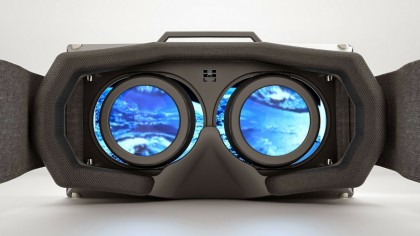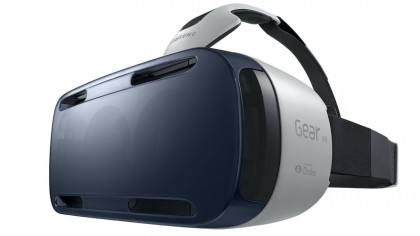Let's get physical: Why proper virtual reality needs to incorporate touch
We're headed for a Metaverse, but only if haptic hurdles are overcome
Why can't virtual reality embrace more senses?
While adding a sense of touch or physical feedback is technically possible, as proved by Lopes, haptic technology is in its very early stages. So while we will see more and more 'sense experiences' being simulated by future iterations of VR headsets, it's going to take some time to refine and shrink the technology.
"Most of the feelings that relate to touch are hard to emulate without using large robotic installations, which are expensive and not mobile – we developed impacto to simulate the sense of impact at a wearable and mobile form factor," says Lopes, who nevertheless thinks we will see more and more senses being researched by the community.
Other projects that Lopes and colleague Lung-Pan Cheng are involved with include Muscle Propelled Force Feedback, which simulates pushing/pulling forces, and Haptic Turk, a complete motion platform.
"The future certainly holds more developments, but one can only speculate at this point," says Lopes, "but I'm excited to see haptic illusions around temperature!" Virtual reality will one day be able to mimic a sense of heat and humidity as well as touch, but by then the humble headset – dealing only with sight and sound – will be but one component.
Is touch really that important?
Not everyone thinks so. "The current findings indicate that a sense of touch isn't necessary to feel 'presence' when in VR," says David Haynes, a specialist in 3D mapping and virtual reality who created an Oculus Rift game based on Scottish mountain Ben Nevis using Ordinance Survey mapping data.
"The extremely low latency visual stimulation seems to be enough in the vast majority of people," he adds, citing the obvious analogy with cinema, which has offered just visual and audio for many years. "We've never needed to add an olfactory – smell – component to that for people to suspend their disbelief," he says, though he admits that anything that adds to the feeling of immersion whilst using VR will help people's sense of presence.

Why is Facebook interested in virtual reality?
When it bought Oculus VR for $2 billion (around £1.3 billion, AU$2.8 billion) in 2014, Facebook took many by surprise. Why would a social media platform be so interested in a headset that offers 360 degree video? The answer is not in the first-gen version of Oculus Rift, but in the vision of the company's founders, John Carmack and Michael Abrash. "They wanted to build the Metaverse – a concept popularised in the Neal Stephenson book 'Snowcrash' – since working together on Quake in the 1990s," says Haynes.
Are you a pro? Subscribe to our newsletter
Sign up to the TechRadar Pro newsletter to get all the top news, opinion, features and guidance your business needs to succeed!

What is a Metaverse?
"The Metaverse is a communal virtual social space where people can meet, chat and share experiences – there are obvious parallels with that, and social media in its current form, that Facebook are obviously very interested in," says Haynes.
Virtual reality for Facebook may also be about giving everyone the best seat in the house. "Manchester United selling the best seat in the house to every one of their supporters around the world, who could watch at home as if they were inside Old Trafford, would be worth significantly more to them than the current Sky and BT TV deals," says Haynes. Think truly immersive sports, live concerts and cinema, all attended virtually via Facebook.
Can Oculus Rift deliver a Metaverse?
Oculus Rift, which is due out in early 2016, won't deliver a Metaverse. Not even close. But it's easy to see why Facebook is excited in the long-term. "I can imagine the potential of connecting many users with each other in virtual experiences that go beyond typing texts in each other's profiles and sending messages," says Lopes. "Perhaps a more meaningful way of interacting by seeing each other in a rather more immersive version of video conferencing."
When that happens, says Lopes, there will be a flood of interest in simulating impact, forces, motion, heat and even smell – and then we'll have arrived at virtual reality technology that's worthy of the name.
- 1
- 2
Current page: Embracing more senses and the Metaverse
Prev Page Introduction and haptic technologyJamie is a freelance tech, travel and space journalist based in the UK. He’s been writing regularly for Techradar since it was launched in 2008 and also writes regularly for Forbes, The Telegraph, the South China Morning Post, Sky & Telescope and the Sky At Night magazine as well as other Future titles T3, Digital Camera World, All About Space and Space.com. He also edits two of his own websites, TravGear.com and WhenIsTheNextEclipse.com that reflect his obsession with travel gear and solar eclipse travel. He is the author of A Stargazing Program For Beginners (Springer, 2015),
